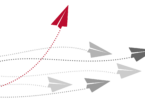Athens, Ga. – The annual turnover rate among substance abuse counselors in the United States is close to 20 percent. In four years, more than half of these counselors will leave the profession entirely, possibly compromising the quality of care for those with addiction problems.
A new $2.55 million grant, just awarded to a team of researchers at the University of Georgia, will support studies into the causes of this turnover and help propose ways to solve a growing problem.
“Little is actually known about counselor retention,” said Lillian Eby, associate professor of psychology and team leader. “We believe the entire project has potential implications for training, licensing and credentialing of substance abuse counselors.”
Others at UGA involved in the five-year grant from the National Institute on Drug Abuse, which is a division of the National Institutes of Health, are: Paul Roman, distinguished research professor of sociology and director of the Center for Research on Behavioral Health and Human Services Delivery at the Institute for Behavioral Research; and Charles Lance, professor of psychology and chair of the Applied Psychology Program.
Others involved in the grant associated with Roman at the Institute for Behavioral Research include Lori Ducharme, Aaron Johnson and Hannah Knudsen.
Health care has higher employee turnover rates than any other industry in America, said Eby. The problem with substance abuse counselors is among the worst in the industry, and while there are assumptions about why this is true, little empirical study has been done to find out why.
“Examining turnover among substance abuse professionals is important for several reasons,” said Eby. “One reason is financial. It is estimated that the turnover cost of losing a single counselor is about $35,000. This estimate is even higher for clinical supervisors, who are also prone to high turnover rates. There are also health-related reasons to be concerned about the turnover. It can disrupt the treatment process and sever established and successful patient-therapist relationships.”
Everyone knows that substance abuse counseling is a high-stress job, and many researchers who have examined the problem believe that burnout problems among these caregivers are a contributing factor in turnover.
The just-funded research program will provide a comprehensive examination of turnover among substance abuse professionals. For such a high burnout occupation, reliable data are crucial. Among the areas the team will study are: how positive interpersonal relationships at work, particularly the mentoring relationship between counselor and clinical supervisor, reduce the chance of turnover; the association between burnout, work attitudes and turnover; and how changes in the clinical supervisory relationship affect burnout, work attitudes and ultimately turnover.
Eby is an industrial and organizational psychologist and an expert on mentoring. (In the substance abuse profession, the process of clinical supervision is usually referred to as a mentoring relationship.) Roman’s research focuses on the organization and management of treatment systems, the design of intervention efforts to deal with employees who have substance abuse problems and sociological analysis of substance abuse problems and policies. Lance is an industrial and organizational psychologist and an expert in quantitative methods.
“In the new research, we will incorporate key findings from models of employee turnover, burnout and the well-known ‘investment model,’ of close relationships,” said Eby. “In so doing, we will include the costs and benefits of clinical supervision, job satisfaction, burnout, relationship alternatives, investments in the relationship, organizational commitment, turnover intentions and turnover as key areas of study.”
The National Institute on Drug Abuse was established in 1974, and in 1992 it became part of the National Institutes of Health in the Department of Health and Human Services.
##







